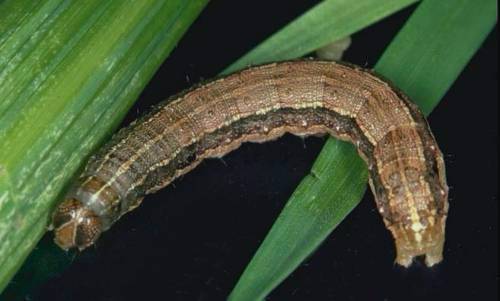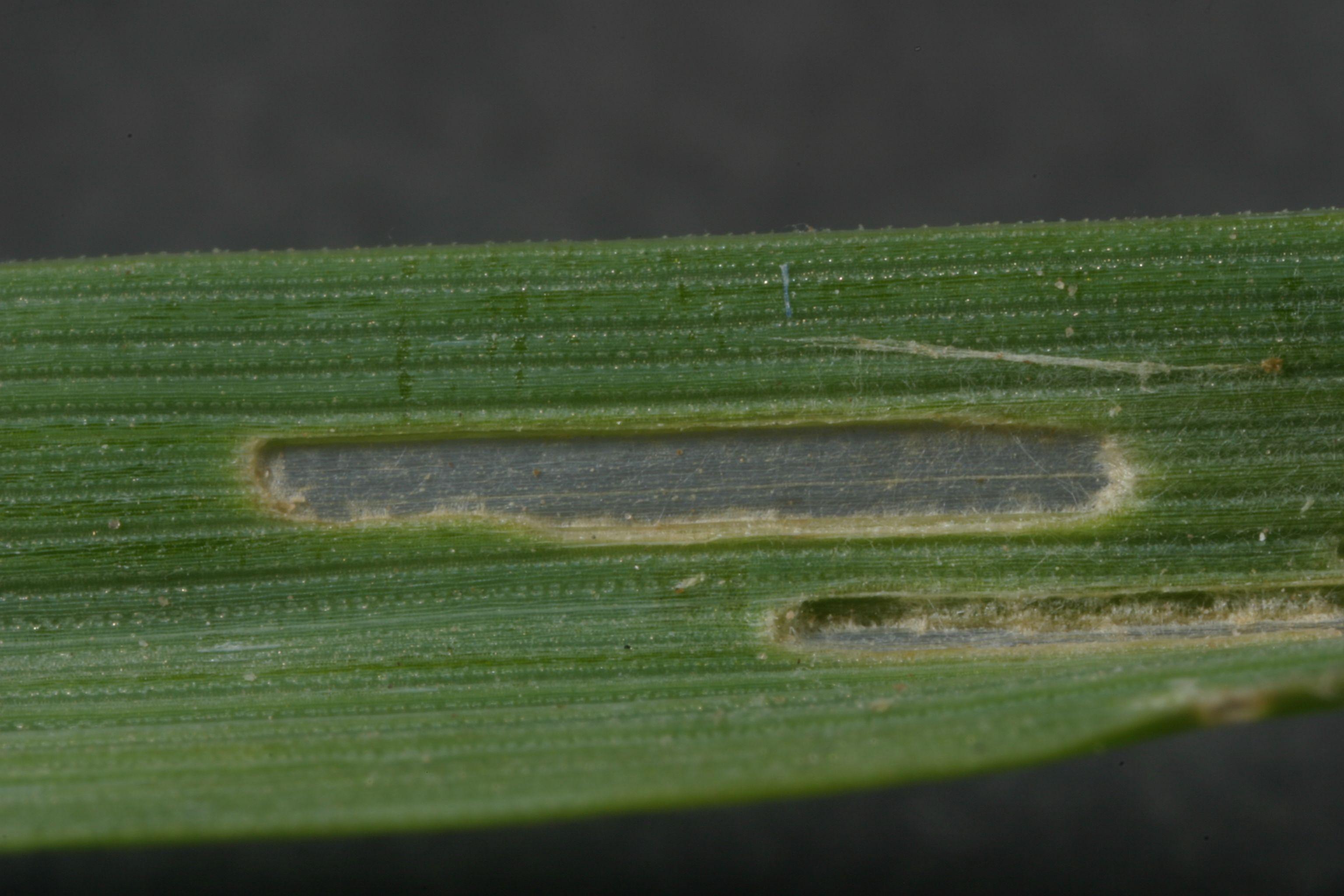Fall Armyworm
Spodoptera frugiperda
 Fall armyworm larva. |
'Windowpane' feeding damage by small larva on wheat leaf. |
The fall armyworm does not overwinter in Kansas in any significant numbers, but migrates northward annually from southern states. It usually arrives in Kansas in July where it lays eggs on corn, sorghum and other summer crops. There are typically two overlapping generations, with reproduction continuing through August and into September, putting early-planted wheat at greatest risk. In years with a late spring, when cold weather persists into April, both generations may be delayed so that second generation moths emerge too late to lay their eggs in developing sorghum heads, which are only attractive up to soft dough stage, and turn their attention to any newly emerging wheat. Early-planted fields should be inspected frequently during the first few weeks following emergence. The first sign of damage is 'windowpane' injury to seedling leaves caused by tiny larvae chewing off a single layer of cells. The larvae are usually too small to be easily noticed at this time, and hide in or around the base of seedlings. Within a few days of feeding, the larvae become large enough to destroy entire leaves. Fields with 25 to 30 percent of plants with windowpane injury should be re-examined daily and treated immediately if stand establishment appears threatened. Larvae increase in size at an exponential rate, and so do their food requirements. Later instars do the most damage, sometimes destroying entire stands, and are the least susceptible to insecticides. Without treatment, problems can continue until larvae reach maturity or until there is a killing frost. Treatment decisions should also take into account the size of larvae. If there is significant stand reduction, and most larvae are more than an inch long, it may be best to simply delay replanting until most larvae have pupated.
Please refer to the most recent Wheat Insect Management Guide for control options.
Page last updated 06/06/2024 by J.P. Michaud.
